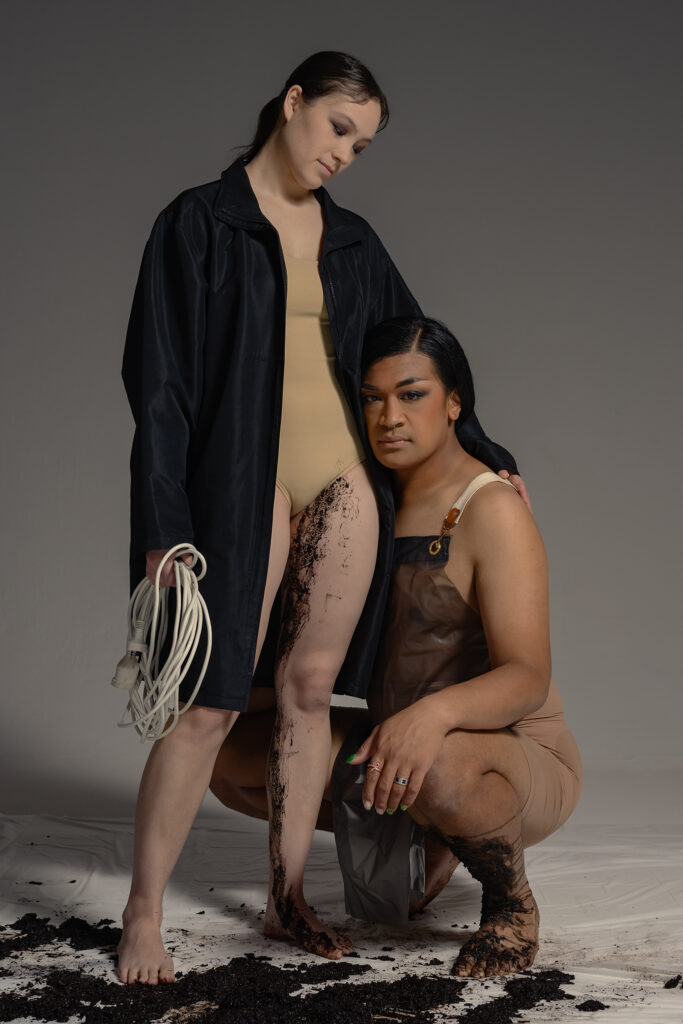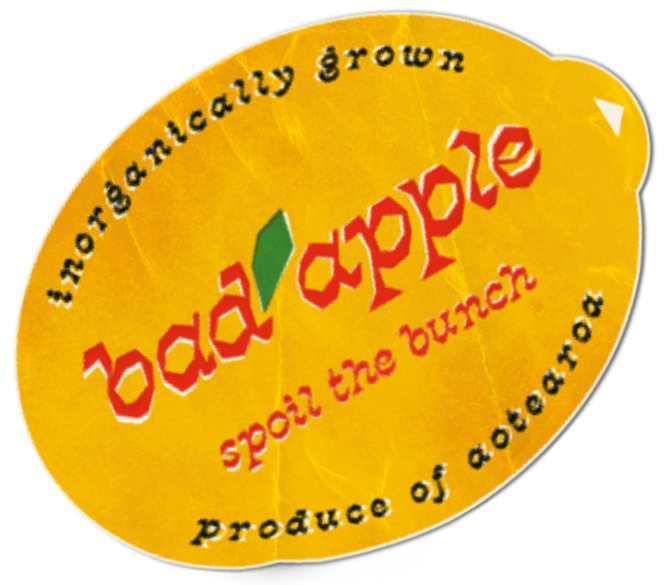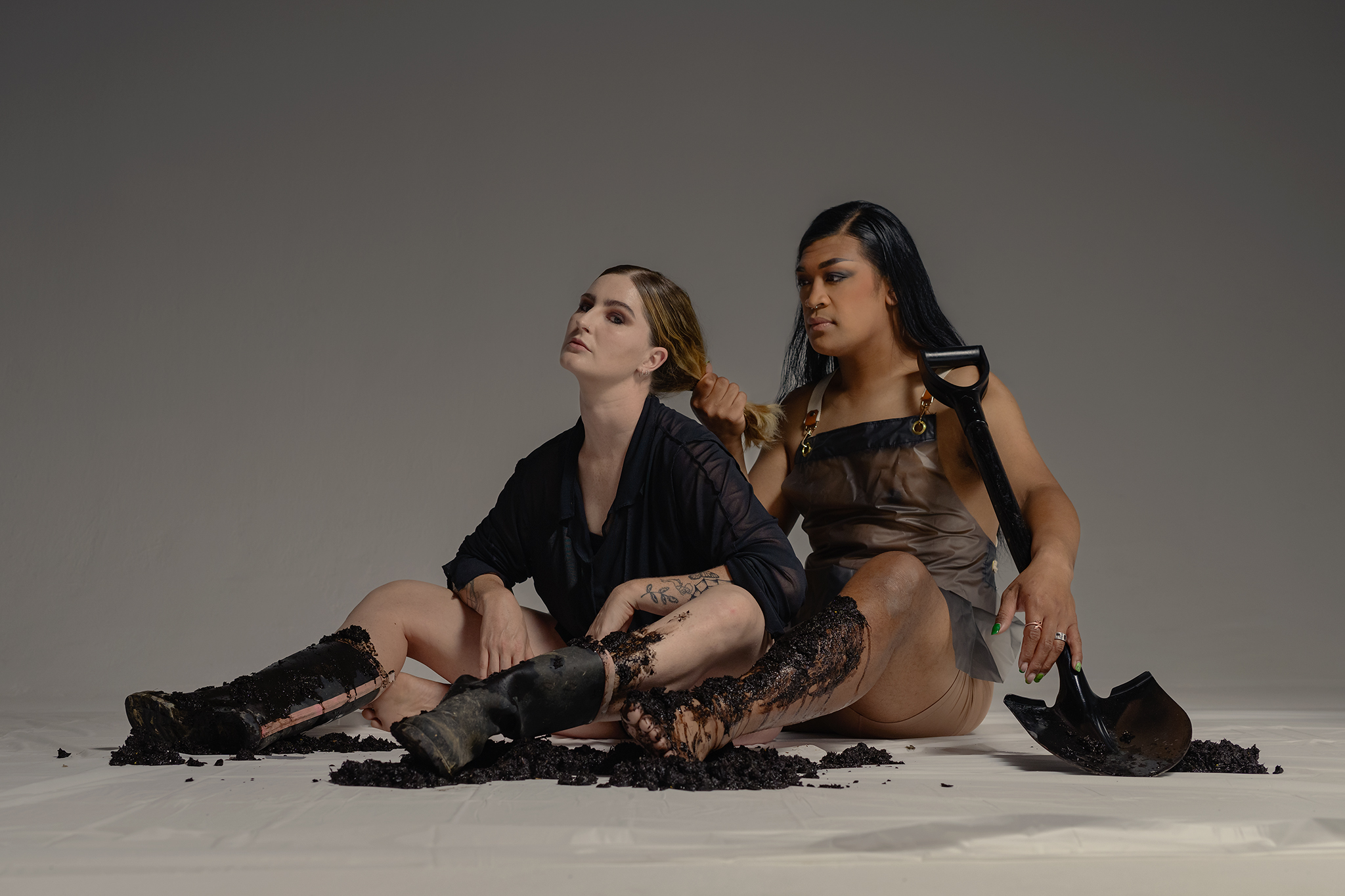Jessie McCall commits to destroying her white worlds. I hold on to this as I enter the performance space at LOT23, rows of benches lined up perpendicular to the stark stage; with all of us squashed together, revelling in the delight of a premiere, there’s something in the air akin to Fashion Week. (Of course, it’s Auckland Pride—The Bloom is among the 2024 line-up of Pride Elevates, marking choreographer and creator McCall’s ‘Established’ place in shaping the arts community.)
The large, plain expanse of the set is washed white, almost a void but for the video player and multipurpose printer. I’m eager, after being introduced (relatively late) to McCall’s work with I Get So Emotional Baby back in 2022, to discover what we’re in for. To see how an ecosystem is built, and then slips; is wrenched open.
“The work presents a glorious pull between nature and technology, between analog and digital, between innate and constructed, even violently imposed.”
We begin with a video. The turning-point talisman of a VHS slotted into the machine. A seed emerges, projected 8-bit-esque against a screen—against what will become the printer, against a performer’s body, against the performance space itself—pulsing larger, into life. This is our titular phenomenon, and one we will watch recur. Through this digital projection, which grows and distorts and is added to, alongside McCall’s sharp, breathtaking choreography, The Bloom asks us to witness creation, procreation, production, and birth as enmeshed processes. The work presents a glorious pull between nature and technology, between analog and digital, between innate and constructed, even violently imposed.
There’s plenty that stuns from a technical perspective, including RDYSTDY Studio’s moving image work: the aforementioned blooming seedling and the entirety of the interface displayed against the high walls of the space, production corresponding directly to the items and images appearing in real-time from the scanner/printer. There’s comedy in this: garden tools are ‘printed’ (drawn from the device inch by inch, by a meticulously controlled Sofia McIntyre), and their metal shapes shift with every jog of the machine. There’s also something haunting there: images pulled and distorted across the curve of the walls, blown up and dragged onward to nowhere. Kudos on the placement of said projector(s), too; every image hits its mark seamlessly.
The striking sound design brings insidiousness to old favourites, throwing sinister cords over radio hits. (McCall has a great knack for score and soundtracking.) The whirs of digital production within the work—again, the printer/refrigerator/incubator, that multitudinous machine—are almost visceral: the tones feel familiar, nigh on organic, evocative with their slight datedness and grounded because of it. Then we have the scrape of sharp metal, prongs and a scythe, against the concrete floor. That undeniable grating.
There is a danger, with these tools; they’re whirled and wielded, sometimes with a speed that holds me transfixed—once I’ve got over my initial fear of a performer being injured—by the precision of the movements. The whole production feels this intentional. Every movement by the trio of dancers, Sofia McIntyre (aforementioned), Raven Afoa-Purcell, and Sasha Matsumoto, is measured: the robotic glitches, the tension, the propulsive fluidity. It’s a well-drawn ensemble. With each individual performer, and then every subsequent combination—every duo within the trio, every growth or shift represented—there is a new angle by which the work’s essential themes are articulated and explored.

The Bloom is a mirage of stunning vignettes; I start off leaning forward gently (it’s a full house, scarce for shoulder room), and then find myself completely drawn in. There’s so much I’m still thinking about, so much I’ll be thinking about for ages yet—the dissonance of my sympathetic distress at a scene and my curatorial delight at the soundtracking (a kind of “Oh god, don’t do it,” to “Hell yeah, they’re doing this!”); Afoa-Purcell tracing the lines of Matsumoto’s moving body against the curved wall, growing almost too fast to follow; McIntyre climbing atop the multipurpose printer, scanned anatomy creeping correspondingly in projection across the space; induction and initiation to sexuality, to motherhood, to propagation; breast-pumping to feed a machine, milk coursing over, and over, and over, from the mouth.
It’s a marvel to behold, really. It’s also so special, as an audience member, to step back into communion with an artist and to immediately recognise a world built on their taste and sensibility. This is the case with McCall. She designs the costumes, the brilliant soundscape, creating with her team (McIntyre, Afoa-Purcell, and Matsumoto; RDYSTDY Studio; lighting designer Calvin Hudson; producer Madison Cronin) a distinct and rich mise en scène; the palette sits both as pop and as a punch to the gut. It’s a sparse, tailored warmth—something tactile to it (essential, I think—even the technology evokes an era wherein media could be held in one’s hands), and something elevated, too. Layered bodysuits, shades of purple, salmon, pink; plastic aprons; earth-toned sneakers. Waves of that ghostly blue chalk etched upon the walls.
“It’s also so special, as an audience member, to step back into communion with an artist and to immediately recognise a world built on their taste and sensibility.”
It’s a unique world, bespoke: the multipurpose machine, with its breast pumps, videotapes, triple-pronged garden tools, in all their distortions. Yet this branch shares a node with I Get So Emotional Baby—and, from what else I’ve seen, McCall’s work with her collaborators more broadly. It’s beautiful to see: artists cultivating their throughlines. It’s a perfect piece of curation for Pride Elevates. (We are so much richer, across the board, for Auckland Pride’s programming.)
By the close of the show, the space is flocked with blooming 8-bit flowers, each of them pulsing with new life. There’s barely a pause; the audience response—applause, yes, and a waiata, too, and quite the crowd up on their feet—springs forth with absolute readiness. It’s the beauty of collective experience, and in particular a testament to this work: determined; explorative; relishing in nuance, multitudes, and ambiguity (as dance is so distinctly primed for—and as is so entwined in both queerness and the natural world); fun; upsetting; intelligent. As the audience begins to filter out, I cast my eyes over to the now-abstracted lines etched on the far wall. The marks of the body, of the movement, of the attempted capture, documentation, witnessing, of the attention paid. Of the growth and the despite-potential-futility dedication to following.
May The Bloom be the seed for much more—from McCall, and from her collaborators across the board. If that’s the case, I’ll squeeze onto a Fashion-Week-style bench seat any time.
Featured photos courtesy of Jessie McCall.



